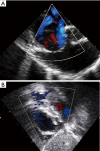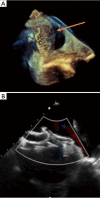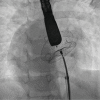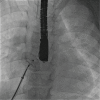Atrial septal defect closure: indications and contra-indications
- PMID: 30305947
- PMCID: PMC6174144
- DOI: 10.21037/jtd.2018.08.111
Atrial septal defect closure: indications and contra-indications
Abstract
Transcatheter closure has become an accepted alternative to surgical repair for ostium secundum atrial septal defects (ASD). However, large ASDs (>38 mm) and defects with deficient rims are usually not offered transcatheter closure but are referred for surgical closure. Transcatheter closure also remains controversial for other complicated ASDs with comorbidities, additional cardiac features and in small children. This article not only provides a comprehensive, up-to-date description of the current indications and contra-indications for ASD device closure, but also further explores the current limits for transcatheter closure in controversial cases. With the devices and technology currently available, several cohort studies have reported successful percutaneous closure in the above-mentioned complex cases. However the feasibility and safety of transcatheter technique needs to be confirmed through larger studies and longer follow-up.
Keywords: Atrial septal defect (ASD); cardiac catheterisation; closure.
Conflict of interest statement
Conflicts of Interest: Alain Fraisse is a consultant and proctor for Abbott Inc. and Occlutech Inc. The other authors have no conflicts of interest to declare.
Figures








References
-
- Mills NL, King TD. Nonoperative closure of left-to-right shunts. J Thorac Cardiovasc Surg 1976;72:371-8. - PubMed
-
- Warnes CA, Williams RG, Bashore TM, et al. ACC/AHA 2008 guidelines for the management of adults with congenital heart disease: a report of the American College of Cardiology/American Heart Association Task Force on Practice Guidelines (Writing Committee to Develop Guidelines on the Management of Adults With Congenital Heart Disease). Developed in Collaboration With the American Society of Echocardiography, Heart Rhythm Society, International Society for Adult Congenital Heart Disease, Society for Cardiovascular Angiography and Interventions, and Society of Thoracic Surgeons. J Am Coll Cardiol 2008;52:e143-e263. 10.1016/j.jacc.2008.10.001 - DOI - PubMed
Publication types
LinkOut - more resources
Full Text Sources
Other Literature Sources
